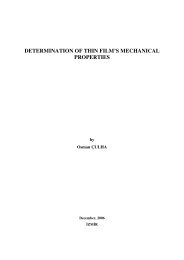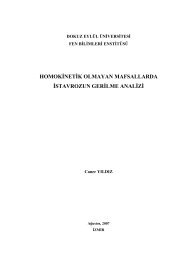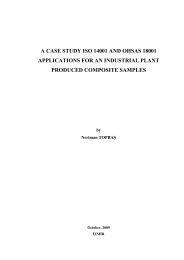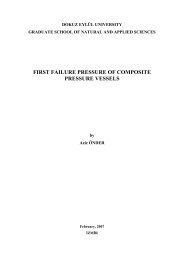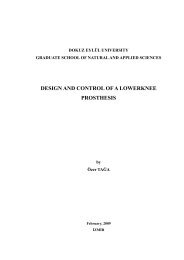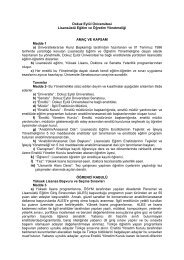DETERMINATION OF THIN FILM'S MECHANICAL PROPERTIES
DETERMINATION OF THIN FILM'S MECHANICAL PROPERTIES
DETERMINATION OF THIN FILM'S MECHANICAL PROPERTIES
Create successful ePaper yourself
Turn your PDF publications into a flip-book with our unique Google optimized e-Paper software.
27<br />
of a blunt punch indenting an elastic solid (Loubet et al, 1984, Doerner and Nix,<br />
1986 ). They obtained:<br />
Figure 3.4 Characteristic region of load-depth diagram<br />
S<br />
dP A<br />
= = 2Er<br />
(3.2) and where<br />
dh π<br />
s<br />
2<br />
1 1−ν<br />
1−ν<br />
0<br />
= + (3.3)<br />
E E<br />
r<br />
E o<br />
2<br />
Er is called reduced modulus or combined modulus, S=dP/dhs is the<br />
experimentally measured stiffness of the upper portion of the unloading data, which<br />
is the slope of the curve fitted straight line of the initial part of unloading, A is the<br />
projected contact area of the indenter at maximum loading condition, E and ν are<br />
Young’s modulus and Poisson’s ratio for the specimen, and E o and νo are the same<br />
parameter for the indenter.<br />
The substitution of reduced modulus in Equation (3.2) for indentation test data is<br />
valid (A.C. Fischer-Cripps, 2001). Because of the utilization of the slope or<br />
unloading stiffness, it makes no difference whether or not the deflection of the<br />
indenter is accommodated explicitly or transferred to that occurring within the





